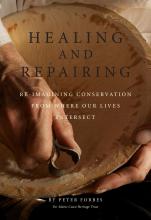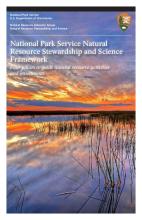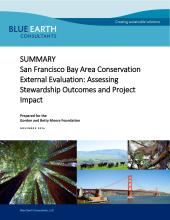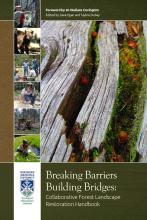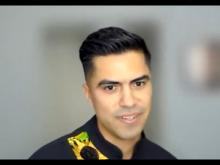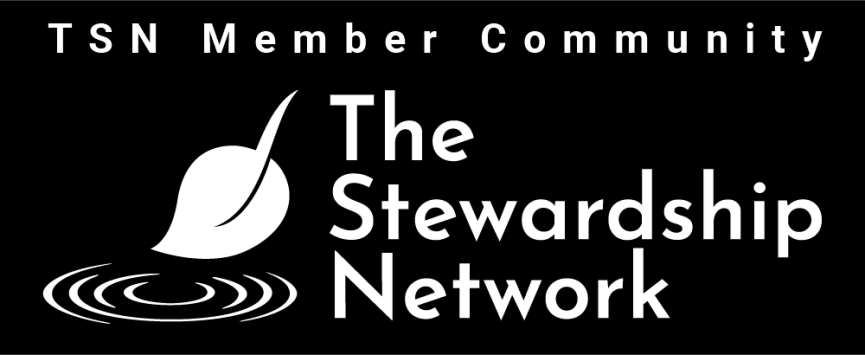Check out how collaboration is supporting landscape-scale species recovery, forest health, fire resilience, and habitat restoration across the state.
Maine Coast Heritage Trust, 2016
Reflects on evolving human-place relationships in Maine, offering insights for inclusive, heart-centered conservation everywhere.
- Details
-
Healing and Repairing is a joint project with Maine Coast Heritage Trust to offer observations on a moment when much is evolving in the relationship between people and place in Maine, and to share an essay that respectfully stretches and encourages the hearts and minds of those who care about both. The audience for this essay is people everywhere who think, work and devote their lives to healthy soils, forests, oceans and people. This is a story mostly about Maine; hopefully people from other places will be able to see themselves and their situations within this story.
National Park Service, September 2016
Introduces a framework to guide NPS resource stewardship, focusing on science, collaboration, adaptive management, and investment.
- Details
-
This framework offers a forward-thinking rationale around which natural resource priorities and investments can be articulated, and provides a basis for current and future strategies. The framework recognizes actions that “hold the line”—those day-to-day natural resource activities in parks that managers must attend to—while embracing the need to equip and position the NPS for an increasingly complex and dynamic future. The framework identifies four pillars that guide the NPS to adapt and respond to continuous change, with a focus on long-term ecological integrity and viability:
- Holding the Line
- Managing amid Continuous Change
- Leveraging for Conservation at Scale
- Enhancing Stewardship and Science Access and Engagement
Blue Earth Consultants, November 2016
Evaluates conservation grants’ effectiveness in protecting Bay Area habitats and enabling strategic interventions.
- Details
-
The overarching goal of the Bay Area conservation portfolio is to protect and preserve native habitat and species in the Bay Area. The Gordon and Better Moore Foundation promotes conservation and protection of Bay Area land and achieves its overarching goal through supporting projects throughout 10 counties: Alameda, Contra Costa, Marin, Napa, San Francisco, San Mateo, Santa Clara, Santa Cruz, Solano and Sonoma.
In September 2015, the foundation saw the value in an external evaluation that would seek to answer two difficult questions: assessing stewardship outcomes and variability for local lands protected with Moore Foundation funding, and determining the impact of enabling intervention funding. The foundation hired Blue Earth Consultants, LLC (Blue Earth) to conduct the evaluation. Blue Earth served as the prime contractor and led a multi-disciplinary team including sub-contractors Jenn Fox, Jodi M. McGraw (Jodi McGraw Consulting), and Stuart B. Weiss (Creekside Center for Earth Observation). The following report summary includes a synthesis of the evaluation results organized in four main sections: 1) an overview of the evaluation objectives, questions, and methods used throughout the evaluation; 2) a discussion of the overarching impact of the portfolio; 3) a synthesis of results regarding stewardship outcomes achieved by land protection grants; and 4) a synthesis of results regarding the impact of enabling intervention grants.
Northern Arizona University Ecological Restoration Institute, 2013
Provides tools and insights for effective forest restoration through inclusive, cross-sector collaboration.
- Details
-
Collaborative landscape-scale forest restoration on federally managed lands is an exciting, new public process designed to rescue dry, frequent-fire forest ecosystems through land management actions supported by science and social agreements. Such a complex, multi-perspective undertaking involves individuals, communities, organizations, federal and state agencies, and tribes. This handbook aims to serve as a bridge to the many individual and institutional barriers that collaborative groups may encounter in the process.
- Details
-
On August 30, we were joined by Moisés Moreno-Rivera, Assistant Secretary for Equity and Environmental Justice at California Natural Resources Agency. Over the course of an hour, Moisés and moderator José González talked about his vision for California and the experiences that shape his approach to the work.


